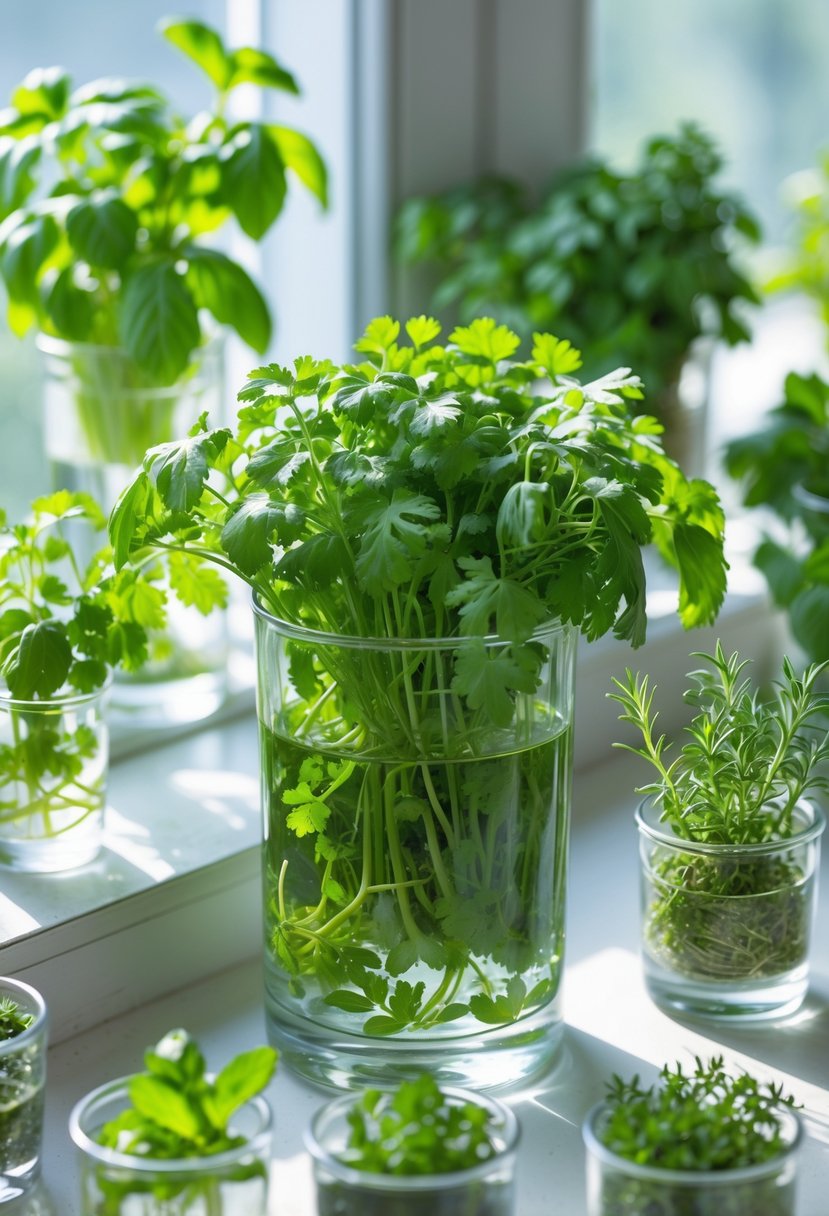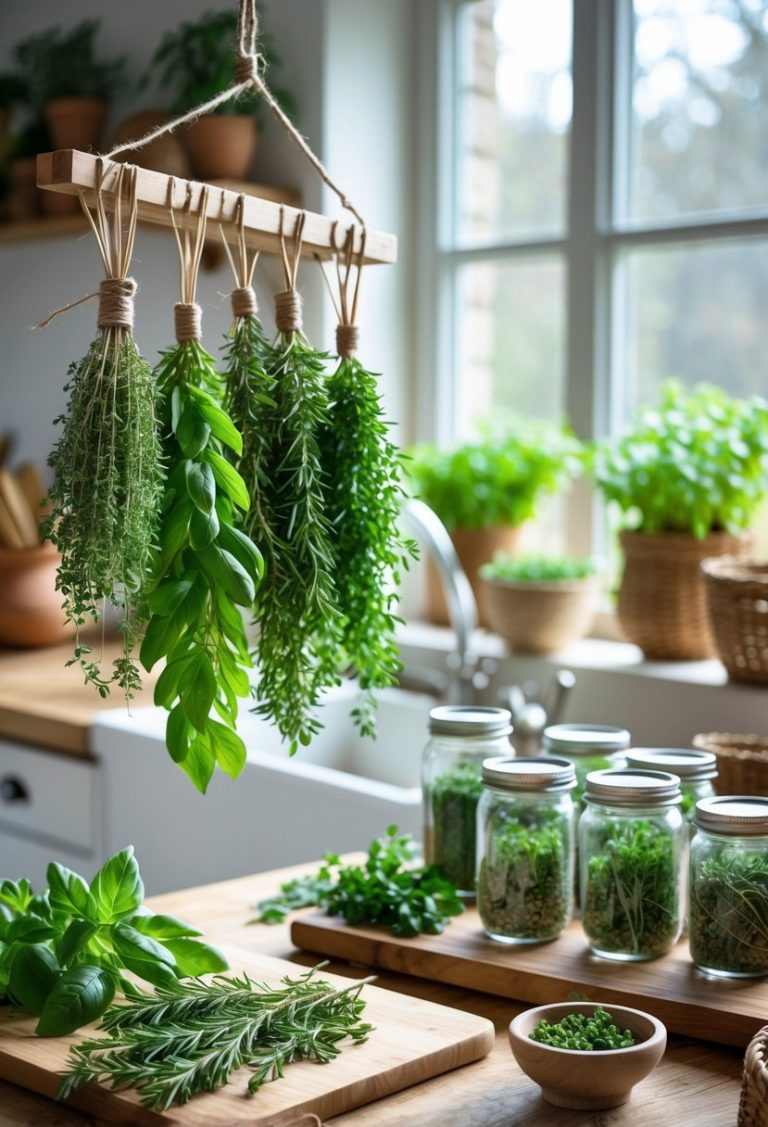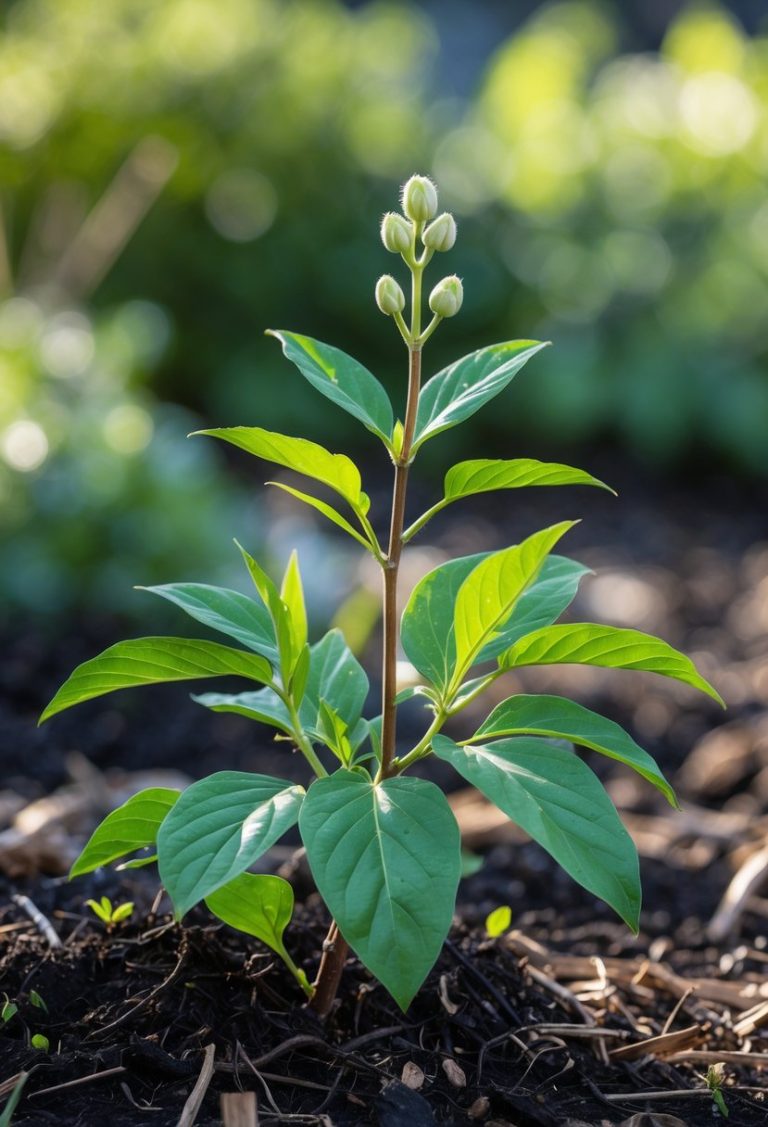10 Herbs You Can Cultivate in Water Indoors for Easy Year-Round Gardening
Growing herbs indoors can be simple and rewarding, even if you don’t have a lot of space or outdoor gardening experience. Using water instead of soil lets you keep fresh herbs year-round with minimal mess and effort.

You can successfully grow many common herbs in water by placing cuttings in containers with sunlight. This method saves space and avoids problems like pests and weeds, making it great for your kitchen or small living areas.
10) Cilantro

You can grow cilantro easily in water indoors. Start by placing healthy cuttings or seeds in a jar with clean water. Make sure the stems are submerged, but keep the leaves above the water to avoid rotting.
Cilantro prefers bright, indirect sunlight. Place your jar near a window where it can get plenty of light without direct sun for long periods.
Change the water every few days to prevent bacteria growth. With the right care, cilantro will grow steadily, giving you fresh leaves for cooking all year round.
9) Oregano

You can easily grow oregano in water indoors. Start by cutting a healthy stem with several leaves. Place the cutting in a jar filled with clean water, making sure no leaves are submerged to avoid rot.
Change the water every few days to keep it fresh and help roots grow. Oregano prefers bright, indirect sunlight, so place your jar near a well-lit window.
Once the roots are a few inches long, you can keep growing it in water or plant it in soil for more growth. Oregano in water lets you have fresh leaves ready for cooking whenever you need them.
8) Lemongrass

You can grow lemongrass easily in water indoors. Start by placing a fresh stalk with roots or cuttings in a glass of water. Make sure the water covers the base but not the leaves.
Keep the jar in a bright spot where it gets indirect sunlight. Change the water every few days to prevent mold and keep it fresh.
Lemongrass will start to develop roots within a week or two. Once the roots grow longer, you can use the lemongrass for cooking or tea. It adds a fresh, citrus flavor to your dishes.
7) Chives

You can easily grow chives in water indoors. Start by cutting off the green part, leaving the bulb and about four inches of the green stem. Place the bulb in a jar filled with water.
Make sure the jar is in a spot with direct sunlight. The chives will begin to regrow from the bulb within a few days.
Change the water every few days to keep it fresh and prevent rot. With minimal care, you will have fresh chives to use in your cooking throughout the year. Growing chives this way takes little space and is low maintenance.
6) Thyme

You can easily grow thyme in water using stem cuttings. Start by cutting a healthy piece of thyme just below a leaf node. Place the cutting in a jar with enough water to cover the stem.
Thyme prefers bright, indirect sunlight. Keep the jar near a window where it gets light but avoid direct, harsh sunlight. Change the water every few days to keep it fresh.
With time, roots will grow from the cutting, and you’ll have fresh thyme ready to use. Growing thyme in water saves space and lets you keep this herb handy for cooking all year.
5) Sage

You can grow sage easily in water indoors. Take a healthy stem cutting and place it in a glass jar with water, making sure the leaf nodes are submerged.
Sage prefers bright, indirect sunlight. Keep the water fresh by changing it every few days to prevent bacteria growth.
This herb has silvery-grey leaves and a strong earthy flavor. It can thrive in water and adds a great taste to many dishes. Growing sage this way saves space and lets you have fresh leaves whenever you need them.
4) Rosemary

You can grow rosemary indoors using water, but it may take longer to root than other herbs. To start, take a healthy cutting about 4 to 6 inches long from new growth on an established plant. Remove the leaves from the bottom part of the stem before placing it in a glass of fresh water.
Keep your rosemary cutting in a spot with plenty of bright sunlight. Change the water every few days to prevent bacteria growth. Be patient, as rosemary roots can take weeks to develop.
Once your rosemary has rooted, it will continue to grow with regular care. This herb adds a fragrant touch to many dishes and can thrive indoors grown this way.
3) Parsley

You can easily grow parsley in water indoors. Start by cutting a healthy stem just below a leaf node and place it in a glass jar filled with clean water.
Make sure the jar gets plenty of indirect sunlight. Change the water every few days to keep it fresh and prevent mold.
Parsley grows roots in water within a couple of weeks. Once the roots are about two inches long, you can keep it in water or transfer it to soil if you want.
This method allows you to have fresh parsley available year-round without needing soil or much space. Just trim the leaves as needed for cooking.
2) Mint

You can easily grow mint in water using just a few cuttings. Cut a 4-6 inch sprig from a healthy mint plant. Remove the leaves near the bottom and place the stem in a glass of water.
Keep the water level just below the lowest leaves to avoid rot. Change the water every 2-3 days to keep it fresh.
Mint prefers indirect sunlight and cooler indoor temperatures. It grows well on a windowsill or kitchen counter.
Once the roots grow strong, you can keep mint in water long-term or transplant it to soil. Mint is a versatile herb you can use fresh for drinks, cooking, or garnishes.
1) Basil

You can easily grow basil in water using cuttings from a healthy plant. Just place a stem in a jar filled with water, making sure the leaves stay above the water line.
Basil needs plenty of sunlight, so put your jar near a bright window. Change the water every few days to keep it fresh and avoid rot.
Growing basil in water lets you multiply your plants without soil. You can harvest leaves as needed, giving you fresh basil for cooking all year round. This method is simple and takes up little space.
Optimal Conditions for Indoor Herb Cultivation

To grow herbs successfully in water indoors, you need to control the light, water quality, and maintenance carefully. The right balance helps your herbs grow strong and healthy without soil or extra fuss.
Light Requirements and Placement
Herbs in water need about 6 to 8 hours of bright, indirect sunlight a day. Place your jars near a south-facing window for the best light. East- or west-facing windows also work but may provide slightly less sun.
Avoid direct midday sun, which can be too intense and burn delicate leaves. If natural light is limited, use a grow light for 12 to 16 hours daily. Position the light about 6 to 12 inches above the herbs.
Rotate your containers every few days. This keeps growth even and prevents your herbs from leaning toward the light source.
Water Quality Considerations
Use clean, chlorine-free water to keep herbs healthy. Tap water can work if you let it sit out for 24 hours before using to allow chlorine to evaporate.
Filtered or distilled water is best if your tap water is hard or has strong odors. Warmer water (around room temperature) helps roots grow better than cold water.
Add a small amount of liquid fertilizer designed for hydroponic or aquatic plants once every two weeks. This supplies essential nutrients your herbs cannot get from water alone.
Changing Water and Preventing Root Rot
Change the water every 7 to 10 days to keep it fresh and oxygen-rich. Stale water encourages harmful bacteria that cause root rot.
When changing water, rinse roots gently with clean water to remove any slime or buildup. Inspect the roots regularly; healthy roots are white or light tan and firm.
If roots become brown, mushy, or smell bad, trim the damaged parts immediately. Using clear containers helps you monitor root health easily.
Good airflow around your herbs also reduces the risk of mold and rot. Avoid overcrowding jars to keep air moving freely.
Harvesting and Maintaining Healthy Herbs

To keep your herbs thriving in water, focus on regular trimming to promote new growth and watch for signs that your plants need extra nutrients. Managing these aspects will help you maintain strong, flavorful herbs throughout the year.
Pruning Techniques for Vigorous Growth
Regular pruning stops your herbs from becoming leggy and encourages bushier growth. Use clean scissors or pruning shears to cut just above a leaf node or joint. This spot is where new shoots will grow.
Harvest leaves frequently but avoid removing more than one-third of the plant at once. This helps the herb recover faster and keeps it healthy. For herbs like mint or lemon balm, cutting stems back to about 2-3 inches above the water promotes fresh growth.
Remove any yellow or dead leaves immediately. This prevents disease and keeps your water clean. Also, trim roots occasionally to avoid overcrowding, especially if they get long or brown.
Signs of Nutrient Deficiencies
When growing herbs in water, nutrients can run low quickly. Watch for pale or yellowing leaves—this often means your herb is lacking nitrogen. Curling or spotted leaves may indicate other nutritional problems.
If you see slow growth or weak stems, your plants could need more minerals like potassium or magnesium. Use a diluted, water-soluble fertilizer designed for hydroponic or aquatic plants every 2-4 weeks to keep your herbs nourished.
Cloudy or smelly water is a sign to change it often. Clean water provides oxygen and prevents the buildup of harmful substances that block nutrients. Fresh water and proper feeding keep your indoor herbs healthy and productive.






